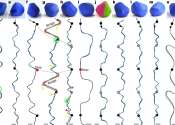There are ghosts in your machine: Cybersecurity researcher can make self-driving cars hallucinate
Have you ever seen a dark shape out of the corner of your eye and thought it was a person, only to breathe a sigh of relief when you realize it's a coat rack or another innocuous item in your house? It's a harmless trick ...
Sep 25, 2023
0
42









